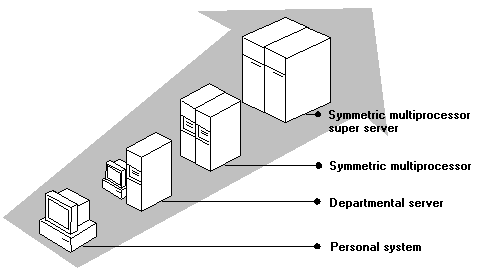
Symmetric multiprocessing (SMP) systems are relatively easy to program. They also leverage the benefits of industry-standard software and hardware components. An SMP system grows by adding memory, disks, network interfaces, and multiple processors to a single shared memory as shown in the following illustration.

SMP is the most popular way to scale beyond a single processor. The SMP software model, often called the shared-memory model, runs a single copy of the operating system with application processes running as if they were on a single processor system. Microsoft Windows NT Server and Microsoft SQL Server are designed to scale well on SMP systems. They can scale to 32 nodes for some applications, but the practical requirements for general-purpose use today are:
Typical large servers are half this size or less.